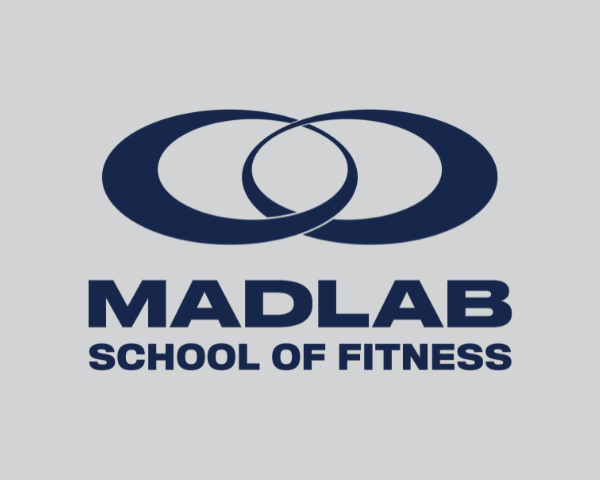WHAT'S BEST FOR THE CLIENT, THE COACH AND THE BUSINESS?
Often, we think about business decisions as a zero-sum game—meaning if the coach wins, the business loses, or if the client wins, the coach loses, and so on.
It makes decision-making seemingly hard sometimes, as you feel like you’re trying to balance everyone’s needs, so one party doesn’t lose out too much for the sake of another.
What if I told you this thinking is entirely false?
In other words, you can have it all!
Good business decisions work for everyone: the client, the coach and the business. The fundamental Madlab Group principle says this: All business decisions need to work for the client, the coach and the business. If they don’t, they’re not worth considering.
Never is this more true than when we consider the coach’s role at your gym.
Let’s take a look at the group exercise class coach, which is what most small gyms have.
A group class coach generally:
• Gets paid by the hour to coach a group class
• Does not earn a professional wage ($70,000-plus a year working as a coach)
• Coaches as many as six group classes per day (if they’re a full-time coach), often coaching the same workout six times a day.
• Is most commonly a part-time coach with a second job
• Does not ‘own’ their own clients within your gym
• Is not directly responsible for sales or client retention
• Has no personal relationships with the gym’s group class clients
In other words, this coach shows up, coaches for one to six hours, clocks out and goes home.
Now let’s consider what I mean by a professional coach.
A professional coach:
• Is a full-time coach who is pursuing a lifelong career in the fitness industry
• Gets paid a professional wage to take care of their clients and everyone elses
• Gets compensated based on performance (percentage of revenue) based on their ability to bring in and retain their book of clients. In other words, they are directly responsible for sales, client happiness and client retention
• Coaches five to seven group classes a week and no more than two per day (all clients who attend group classes have been through 15-20 personal training sessions as their fundamentals program with their coach, and continue to meet their coach once every six weeks, so they’re experienced, self-sufficient clients who have been appropriately trained to cater the training program to their needs).
• Has their own business (book of clients) within your business (similar to a physical therapist or massage therapist)
• Has a personal relationship with their clients, which is key to genuinely taking care of their ever-changing needs and goals
• Has the opportunity to be a coach for life!
The results for the client, the coach and the business in the group class model:
Group-class client: The group-class client doesn’t receive any individualized or personalized care from a coach who knows their wants, needs and goals, not to mention what’s going on in their life at any given time that might affect what they need fitness-wise. Instead, they receive a generic group class workout program. In other words, they are basically just paying for strenuous workouts. As a result, group-class clients usually don’t stick around for years. Madlab Group data shows churn rates to be close to 80 percent in group class only gyms (meaning gyms whose group class revenue accounts for more than 60 percent of the gym’s gross revenue). So, in other words, clients don’t get what they need physically or emotionally, so they usually don’t remain committed to their health and fitness for life.
Group class coach: The coach doesn’t have a whole lot of job satisfaction because they don’t actually really help clients—they don’t provide a solution to their problem. Instead, the group class coach provides a workout. That’s it. They also usually get bored and burn out pretty quickly, coaching the same workout to a group repeatedly. And, getting paid by the hour in the $30 an hour range means he has little to no chance of ever making a professional wage in the fitness industry, so they do it as a part-time gig after their full-time job or eventually leave the industry.
Group class business model: The onus falls 100 percent on the owner to do everything. The owner is the only one who really cares about the business, about bringing in and keeping clients. Their coaches are a labour cost to the business, and most coaches don’t stick around, so it’s a constant revolving door for the owner to replace clients and coaches. The owner gets burnt out and has little to no business profit to show for it at the end of the day.
The results for the client, the coach and the business in the professional coach model:
Client: The client has a coach for life in their corner to help them with their problems and challenges, be it injuries, nutrition, work stress etc. The client receives the individual attention that considers their strengths and weaknesses, and as a result, they get more fit and stay more injury-free. The result: Clients stick around. The churn rate in Madlab Group gyms that follow this model is close to 10 to 20 percent (half of the churn is generally because of clients leaving the city).
Coach: The coach gets to make a difference in their clients’ lives, meaning job satisfaction skyrockets. They also have all the freedom in the world to set their schedule, and they are considerably less bored as they are not coaching 5 group classes a day. Most Madlab Group coaches spend 15-30 hours a week on the floor, depending on the week. Further, the coach now has the opportunity to make a professional wage in the fitness industry ($70,000-plus a year). The top Madlab Group coach earned $100,000 in 2021.
Business: The owner is freed up to develop coaches and the business. They now have coaches they can depend on to bring in and retain clients (i.e. coaches who care about the business, as coach success is tied to business success and vice versa). Their coaches are no longer a labour cost; they’re revenue generators for the business. The owner now knows clients are taken care of, and they stick around longer, so there’s less pressure to bring in 30 new clients each month. The ultimate result: business profits increase significantly.
Not a zero-sum game.
Menu
Contact Us
1980 Clark Drive
Vancouver, BC Canada
V5N 0A9
info@madlabbusiness.com
Follow Us

Copyright © 2023 Madlab Business. All Rights Reserved.

